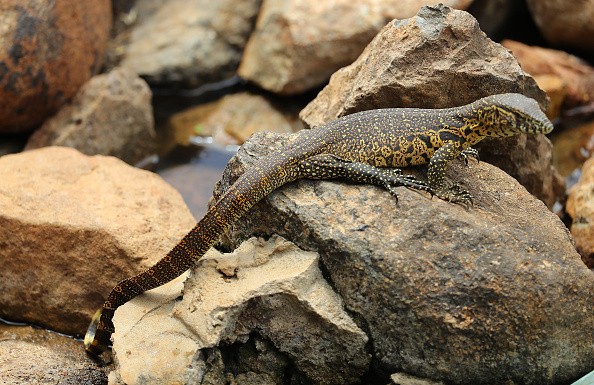Bacterium is accountable for the extinction of critically endangered species. With wild populations wiped out, Christmas Island chained gecko or Lister's gecko (Lepidodactylus listeri) and the blue-tailed skink only survive in captivity. Researchers from the University of Sydney have found a bacterium, which could potentially cause their extinction.

Christmas Island Chained Gecko and the Blue-tailed Skink
Populations of Native reptiles on Christmas Island have been in extreme decline with two species, Christmas Island chained gecko and the blue-tailed skink, completely disappearing from the wild.
While earlier the primary driver for this drop is possibly predation by unwanted species and destruction of habitat, a silent killer is now threatening to wipe out the species completely.
Those reared in captivity on the Australian Boundary in the Indian Ocean have also been dying strangely, leaving Christmas Island chained gecko and the blue-tailed skink, which are in danger of extinction only around 1000 each.
Veterinary scientists from the Australian Registry of Wildlife Health, University of Sydney, and the Australian Taronga Conservation Society have now found what led to these deaths: a bacterium, E. lacertideformus (Enterococcus lacertideformus).
Genetic Testing and Microscopy
The bacterium was found in 2014 after reptiles in captivity presented with facial defects and dulness, and some even lost their lives.
Samples were taken and examined by making use of genetic testing and microscopy. The findings of the researchers, released in Frontiers in Microbiology, will notify antibiotic trials on the reptiles to know if the infection can be cured.
The bacterium develops in the head of the animal, then proceeds to the internal organs of the animal, before finally leading to the death of the animal.
The bacterium can be transmitted by direct contact, which includes through the mouths of the reptiles or via reptiles biting one another, mostly when fighting during the breeding season.
Whole-Genome Sequencing
A co-lead scientist and a candidate of Ph.D. in the Sydney School of Veterinary Science, Jessica Agius said: "This connotes that healthy animals in captive need to be separated from the ones that are infected and should also be taken away from places where infected animals have been."
Ms. Agius and her team of researchers did not only found the bacterium, they unraveled its genetic structure with the use of whole-genome sequencing.
Specific genes were found that are possible to be linked with the ability of the bacterium to infect its host, occupy its tissues, and evade the immune system.

Bacterium Can Circle Itself With a Biofilm
Ms. Agius said they also discovered that the bacterium can circle itself with a biofilm (a community of bacteria that can help it live). She concluded that understanding how E. lacertideformus creates and preserves the biofilm may give insights on how other species of biofilm-forming bacteria should be treated.
The finding of the genetic code advocated that the killer bacterium was receptive to most antibiotics. In an effort to secure the Christmas island's endangered reptiles, a population of blue-tailed skinks has been created on the Cocos Islands.
Ms. Agius played a crucial role in the relocation, testing Cocos island's reptiles to ensure that they were free of Enterococcus lacertideformus.
Related Article: Over 30 Reptiles Mysteriously Died at Zoo Knoxville in Tennessee
For more news, updates about christmas island reptiles and similar topics don't forget to follow Nature World News!
© 2025 NatureWorldNews.com All rights reserved. Do not reproduce without permission.





